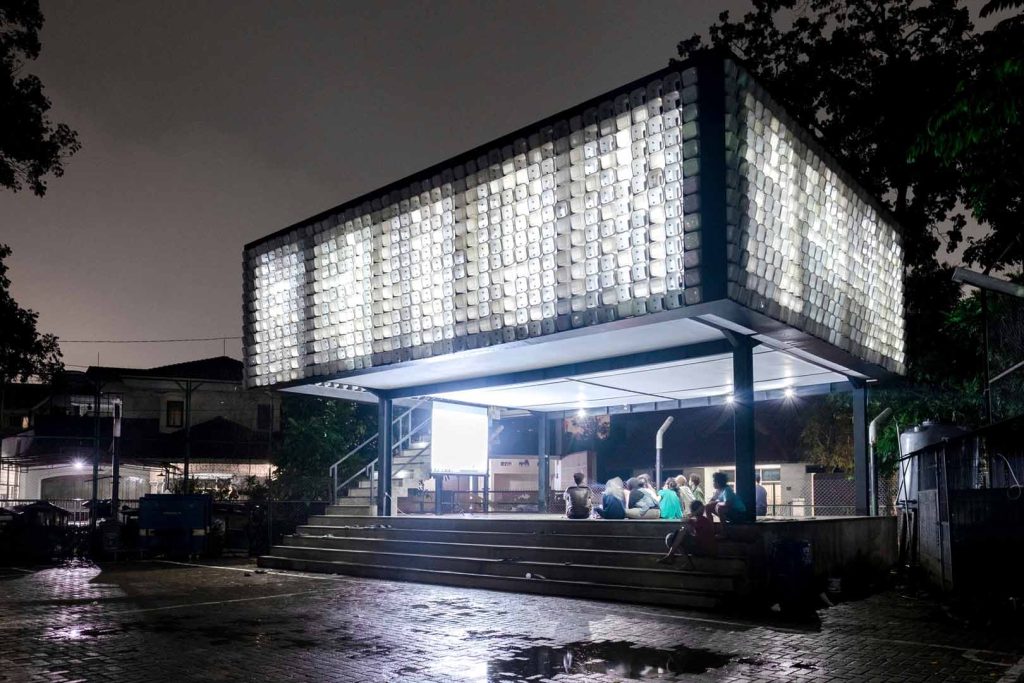The aim of this project is to design and build small community libraries with a maximum one hundred square meters of reading space. The libraries had to have the critical mass to have a presence as a building but not be so large as to extend the purpose, which would make financing more challenging. All libraries are designed with passive climatic strategies to reduce running costs while providing comfortable spaces without requiring air conditioning and electric lighting during the day. The buildings offer spaces for flexible usage as small community centers. Play features in the form of swings, slides, or a big hammock net are integrated into the design to attract children and enhance place making. The material and form of the buildings contribute to or even shape a positive identity for the location.
Cause
Reading interest in Indonesia is low. Education and literacy are the main targets of the project. The microlibraries are intended to counter the common public perception in Indonesia that books are boring or reading is a form of punishment. Apart from being libraries, the microlibraries are small neighborhood community centers situated at locations already frequented by locals to enhance the quality of the place and add value. They are designed to be places catering to informality where people actively go not only to read but also to gather, have a coffee, and mingle.
Method
Each project started with extensive observation on site and discussion with the local community. In the case of Microlibrary Bima, there were extensive talks with the previously existing project, which provided books via reused hawker carts. It became clear that the square was already used for community gatherings as well as for children playing football. Hence, the design did not occupy the small street football corner nor touch the existing stage but hovered above to add value in the form of a roof and comfortable space.
Impact
Five microlibrary designs have been built, and the sixth is under construction. The three most successful are situated in dense urban locations either inside or adjacent to kampungs—often slum-like urban villages—in the cities of Bandung and Semarang.
Both Microlibrary Bima and Warak Kayu have a strong organizational model where monitoring from an umbrella organization happens. That makes organization of activities, acquisition of books, book donations, and maintenance assessment of the building run more smoothly and ensures that the original purpose of the building remains the same.

